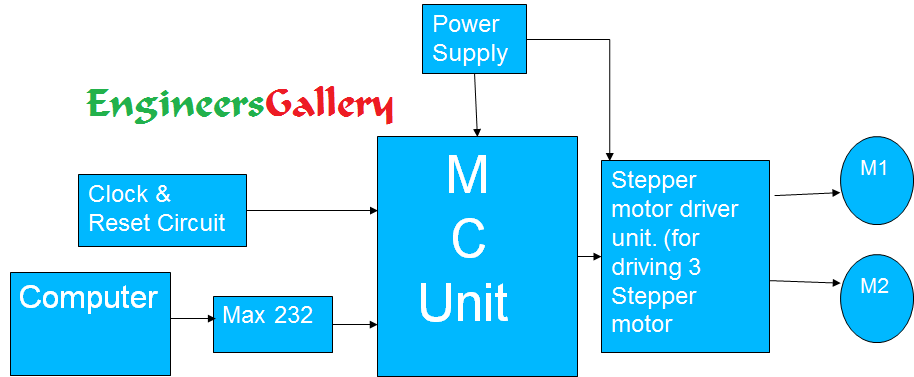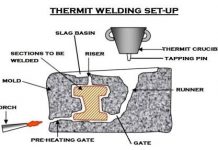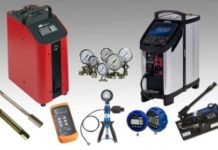CORE MAKING
Core making basically is carried out in four stages namely core sand preparation, core making, core baking and core finishing. Each stage is explained as under.
1 Core Sand Preparation
Preparation of satisfactory and homogenous mixture of core sand is not possible by manual means. Therefore for getting better and uniform core sand properties using proper sand constituents and additives, the core sands are generally mixed with the help of any of the following mechanical means namely roller mills and core sand mixer using vertical revolving arm type and horizontal paddle type mechanisms. In the case of roller mills, the rolling action of the mulling machine along with the turning over action caused by the ploughs gives a uniform and homogeneous mixing. Roller mills are suitable for core sands containing cereal binders, whereas the core sand mixer is suitable for all types of core binders. These machines perform the mixing of core sand constituents most thoroughly.
2 Core Making Process Using Core Making Machines
The process of core making is basically mechanized using core blowing, core ramming and core drawing machines which are broadly discussed as under.
2.1 Core blowing machines
The basic principle of core blowing machine comprises of filling the core sand into the core box by using compressed air. The velocity of the compressed air is kept high to obtain a high velocity of core sand particles, thus ensuring their deposit in the remote corners the core box. On entering the core sand with high kinetic energy, the shaping and ramming of core is carried out simultaneously in the core box. The core blowing machines can be further classified into two groups namely small bench blowers and large floor blowers. Small bench blowers are quite economical for core making shops having low production. The bench blowers were first introduced during second war. Because of the high comparative productivity and simplicity of design, bench blowers became highly popular. The cartridge oriented sand magazine is considered to be a part of the core box equipment. However, one cartridge may be used for several boxes of approximately the same size. The cartridge is filled using hands. Then the core box and cartridge are placed in the machine for blowing and the right handle of the machine clamps the box and the left handle blows the core. In a swing type bench blower, the core sand magazine swings from the blowing to the filling position. There is also another type of bench blowing, which has a stationary sand magazine. It eliminates the time and effort of moving the magazine from filling to the blowing position. The floor model blowers have the advantage being more automation oriented. These floor model blowers possess stationary sand magazine and automatic control. One of the major drawbacks in core blowing is the channeling of sand in the magazine which may be prevented by agitating the sand in the sand magazine.
12.16.2.2 Core ramming machines
Cores can also be prepared by ramming core sands in the core boxes by machines based on the principles of squeezing, jolting and slinging. Out of these three machines, jolting and slinging are more common for core making.
2.3 Core drawing machines
The core drawing is preferred when the core boxes have deep draws. After ramming sand in it, the core box is placed on a core plate supported on the machine bed. A rapping action on the core box is produced by a vibrating vertical plate. This rapping action helps in drawing off the core from the core box. After rapping, the core box, the core is pulled up thus leaving the core on the core plate. The drawn core is then baked further before its use in mold cavity to produce hollowness in the casting.
3 Core baking
Once the cores are prepared, they will be baked in a baking ovens or furnaces. The main purpose of baking is to drive away the moisture and hard en the binder, thereby giving strength to the core. The core drying equipments are usually of two kinds namely core ovens and dielectric bakers. The core ovens are may be further of two type’s namely continuous type oven and batch type oven. The core ovens and dielectric bakers are discussed as under.
3.1 Continuous type ovens
Continuous type ovens are preferred basically for mass production. In these types, core carrying conveyors or chain move continuously through the oven. The baking time is controlled by the speed of the conveyor. The continuous type ovens are generally used for baking of small cores.
3.2 Batch type ovens
Batch type ovens are mainly utilized for baking variety of cores in batches. The cores are commonly placed either in drawers or in racks which are finally placed in the ovens. The
core ovens and dielectric bakers are usually fired with gas, oil or coal.
3.3 Dielectric bakers
These bakers are based on dielectric heating. The core supporting plates are not used in this baker because they interfere with the potential distribution in the electrostatic field. To avoid this interference, cement bonded asbestos plates may be used for supporting the cores. The main advantage of these ovens is that they are faster in operation and a good temperature control is possible with them. After baking of cores, they are smoothened using dextrin and water soluble binders. Copied from A Textbook of a Basic Manufacturing Processes and Workshop Technology by Rajender Singh.















